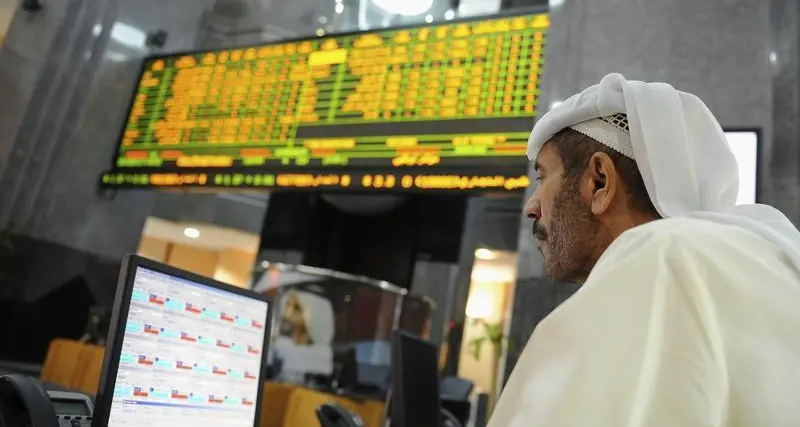PHOTO
Fitch Ratings-Hong Kong-December 18: Fitch Ratings has downgraded Oman's Long-Term Foreign-Currency Issuer Default Rating (IDR) to 'BB+' from 'BBB-'with a Stable Outlook.
A full list of rating actions is at the end of this rating action commentary.
KEY RATING DRIVERS
The downgrade reflects the following key rating drivers:
Despite a sharp increase in average oil prices this year, we expect Oman's budget deficit to narrow only gradually to 9% of GDP, still one of the largest deficits among Fitch-rated sovereigns. This has exposed the rigidity of public expenditure and weaknesses in Oman's fiscal policy framework. We estimate that Oman's underlying fiscal stance has become more expansionary in 2018, as measured by a widening of the non-oil primary deficit.
Although additional hydrocarbon revenue and some non-oil revenue measures have narrowed the deficit from around 14% of GDP in 2017 and more than 21% of GDP in 2016, government spending has increased again. This is despite continued restraint on the civil service payroll and capital spending. In nominal terms, the deficit will be only about 10% smaller than budgeted, despite oil prices averaging more than 30% above the 2018 budget assumption of USD50/bbl. We estimate that Oman would have needed an oil price of USD96/bbl in 2018 to reach budget balance.
Lower oil prices will limit policy space in 2019-20. We forecast the fiscal deficit will widen to 10% of GDP in 2019 under our baseline assumption that average Brent oil prices will moderate to USD65/bbl. We also assume that Oman's voluntary commitment to OPEC will constrain average oil production to the 2018 level of around 980 thousand bbl/day, below capacity. Renewed spending restraint, the introduction of VAT and excise tax, continued revenue gains from the new Khazzan gas field and a 5% increase in oil production could narrow the deficit to around 7% of GDP by 2020, despite an assumed moderation of oil prices to USD62.5/bbl.
Fiscal deficits are leading to a sharp deterioration in Oman's sovereign and external balance sheets. We expect government debt to continue on an upward trend well into the 2020s, reaching 58% of GDP by 2020, from 48% of GDP in 2018 and well above the historical 'BBB' median of 36% of GDP. Sovereign net foreign assets (SNFA) will become a negative 8% of GDP in 2020, from an asset position of 7% of GDP in 2018, becoming worse than the 'BBB' median of 3% of GDP. This reflects government external borrowing, the drawdown of reserves and the use of the State General Reserve Fund (SGRF) for financing. Oman's overall net external debt will rise to 53% of GDP in 2020 from 37% of GDP in 2018, also reflecting SOE borrowing. The historical 'BBB' median net external debt is around 7% of GDP.
The outlook for oil production, prices and the pass-through of oil revenues to the government's budget is highly uncertain. We estimate that a USD5/bbl change in oil prices could change the fiscal deficit by around 2% of GDP, all else equal. A change in oil production of around 5% (around 50 thousand bbl/day) relative to our forecast could shift the overall fiscal deficit by more than 1% of GDP. Petroleum Development Oman appears to be on track to expand oil production capacity by around 100 thousand bbl/day from 2017 levels (a 10% addition to Oman's existing production).
Oman's 'BB+' rating and Stable Outlook also reflect the following key rating drivers:
Oman's ratings balance its undiversified economy, high fiscal and external deficits and debt ratios against relatively high GDP per capita and a SNFA position that remains for now stronger than that of other 'BB' category sovereigns
Oman has been able to fund its fiscal and external deficits from a diverse range of sources, and significant public sector assets greatly mitigate financing risks. We estimate that SGRF foreign assets could potentially allow the government to stay out of the debt markets for one to two years. Our assumption is for gross foreign issuance of around USD5 billion per year in 2019-2020 (after USD8 billion in 2018). Debt issuance will be accompanied by drawdowns of around USD1 billion per year from the SGRF (from USD1.3 billion in 2018), privatisation receipts of USD650 million per year and average gross domestic issuance equivalent to around USD2 billion per year.
We expect real GDP growth of 2.8% in 2018, from a contraction of 0.9% in 2017. Nominal GDP data points to broad-based growth in 9M18, with a moderation of fiscal consolidation supporting domestic demand and with only the construction sector seeing a drop in activity. The weakness of the construction sector reflects a wind-down of government capital spending projects and is contributing to falling expatriate employment (down by more than 3% yoy in October). On the hydrocarbon side, oil and gas production is expanding, as is refining activity on the back of the commissioning of the Sohar refinery expansion project last year. Our forecasts assume that growth will fluctuate between 1.8% in 2019 and 3.0% in 2020, reflecting swings in oil production.
There is significant potential for higher growth and government revenue from new hydrocarbon projects, which will be critical to stabilising public and external finances. Phase 2 of the Khazzan gas field could start producing in 2021, adding a further 0.5 billion scft/day of capacity (around 0.1 million boe/day), after the 1 bscft/day addition from Phase 1 in 2017-2018. The recently-discovered Mabrouk field, is estimated to contain more than 4.7 trillion cubic feet of recoverable gas (a 12% addition to Oman's existing reserves) and 112 million barrels of condensate (a 2% addition to existing reserves of oil and condensate). The government is in discussions with Shell and Total on potential new downstream projects including gas-to-liquids and LNG.
Most structural indicators are in line with the 'BBB' median, including World Bank governance indicators. Fitch views the banking system as relatively strong, with regulatory capital at around 16% of risk-weighted assets and non-performing loan ratios in the low single digits (despite a recent up-tick). The social pressure resulting from the low employment rate of young Omanis is a risk to public finances. The domestic political scene remains stable, but uncertainty continues to envelop the eventual succession to Sultan Qaboos, who has not publicly designated a successor. The constitution stipulates that the ruling family must choose a new Sultan within three days of the post becoming vacant, otherwise a letter containing the sultan's recommendation is opened. The economy and government budget revenues are still not diversified, although structural reforms are underway that seek to address this.
SOVEREIGN RATING MODEL (SRM) and QUALITATIVE OVERLAY (QO)
Fitch's proprietary SRM assigns Oman a score equivalent to a rating of 'BBB-' on the Long-Term Foreign-Currency (LT FC) IDR scale.
Fitch's sovereign rating committee adjusted the output from the SRM to arrive at the final LT FC IDR by applying its QO, relative to rated peers, as follows:
- Public Finances: -1 notch, to reflect the rigidity of expenditure and a weak fiscal policy framework, which have contributed to a track record of fiscal slippages and a sharp build-up of net public and external debt.
Fitch's SRM is the agency's proprietary multiple regression rating model that employs 18 variables based on three-year centred averages, including one year of forecasts, to produce a score equivalent to a LT FC IDR. Fitch's QO is a forward-looking qualitative framework designed to allow for adjustment to the SRM output to assign the final rating, reflecting factors within our criteria that are not fully quantifiable and/or not fully reflected in the SRM.
RATING SENSITIVITIES
The main factors that could lead to positive rating action are:
- Narrowing of the budget deficit resulting in stabilisation of the government debt/GDP, for example as a result of an improved fiscal policy framework.
- Sustainable reduction of net external debt/GDP.
The main factors that could lead to negative rating action are:
- Continued increases in government debt/GDP or drawdown in assets, for example due to a failure to reduce the budget deficit.
- Continued increases in net external debt/GDP.
KEY ASSUMPTIONS
Fitch assumes that Brent crude will average USD72.5/bbl in 2018, USD65/bbl in 2019 and USD62.5/bbl in 2020.
Fitch assumes that an eventual transition of power from Sultan Qaboos will be smooth and ensure broad policy continuity.
Fitch assumes no change to the peg of the Omani rial to the US dollar.
The full list of rating actions is as follows:
Long-Term Foreign-Currency IDR downgraded to 'BB+' from 'BBB-'; Outlook Stable
Long-Term Local-Currency IDR downgraded to 'BB+' from 'BBB-'; Outlook Stable
Short-Term Foreign-Currency IDR downgraded to 'B' from 'F3'
Short-Term Local-Currency IDR downgraded to 'B' from 'F3'
Country Ceiling downgraded to 'BBB-' from 'BBB'
Issue ratings on long-term senior unsecured foreign-currency bonds downgraded to 'BB+' from 'BBB-'
Issue ratings on the sukuk trust certificates of Oman Sovereign Sukuk S.A.O.C. downgraded to 'BB+' from 'BBB-'
Contact:
Primary Analyst
Krisjanis Krustins
Director
+852 2263 9831
Fitch (Hong Kong) Limited
19/F Man Yee Building
68 Des Voeux Road Central
Hong Kong
Secondary Analyst
Toby Iles
Director
+852 2263 9832
Committee Chairperson
Michele Napolitano
Senior Director
+44 20 3530 1882
Media Relations: Peter Fitzpatrick, London, Tel: +44 20 3530 1103, Email: peter.fitzpatrick@thefitchgroup.com; Wai-Lun Wan, Hong Kong, Tel: +852 2263 9935, Email: wailun.wan@thefitchgroup.com.
Additional information is available on
Applicable Criteria
Country Ceilings Criteria (pub. 19 Jul 2018)
Sovereign Rating Criteria (pub. 19 Jul 2018)
Sukuk Rating Criteria (pub. 25 Jul 2018)
Additional Disclosures
Dodd-Frank Rating Information Disclosure Form
Solicitation Status
Endorsement Policy
ALL FITCH CREDIT RATINGS ARE SUBJECT TO CERTAIN LIMITATIONS AND DISCLAIMERS. PLEASE READ THESE LIMITATIONS AND DISCLAIMERS BY FOLLOWING THIS LINK:
Copyright 2018 by Fitch Ratings, Inc., Fitch Ratings Ltd. and its subsidiaries. 33 Whitehall Street, NY, NY 10004. Telephone: 1-800-753-4824, (212) 908-0500. Fax: (212) 480-4435. Reproduction or retransmission in whole or in part is prohibited except by permission. All rights reserved. In issuing and maintaining its ratings and in making other reports (including forecast information), Fitch relies on factual information it receives from issuers and underwriters and from other sources Fitch believes to be credible. Fitch conducts a reasonable investigation of the factual information relied upon by it in accordance with its ratings methodology, and obtains reasonable verification of that information from independent sources, to the extent such sources are available for a given security or in a given jurisdiction. The manner of Fitch's factual investigation and the scope of the third-party verification it obtains will vary depending on the nature of the rated security and its issuer, the requirements and practices in the jurisdiction in which the rated security is offered and sold and/or the issuer is located, the availability and nature of relevant public information, access to the management of the issuer and its advisers, the availability of pre-existing third-party verifications such as audit reports, agreed-upon procedures letters, appraisals, actuarial reports, engineering reports, legal opinions and other reports provided by third parties, the availability of independent and competent third- party verification sources with respect to the particular security or in the particular jurisdiction of the issuer, and a variety of other factors. Users of Fitch's ratings and reports should understand that neither an enhanced factual investigation nor any third-party verification can ensure that all of the information Fitch relies on in connection with a rating or a report will be accurate and complete. Ultimately, the issuer and its advisers are responsible for the accuracy of the information they provide to Fitch and to the market in offering documents and other reports. In issuing its ratings and its reports, Fitch must rely on the work of experts, including independent auditors with respect to financial statements and attorneys with respect to legal and tax matters. Further, ratings and forecasts of financial and other information are inherently forward-looking and embody assumptions and predictions about future events that by their nature cannot be verified as facts. As a result, despite any verification of current facts, ratings and forecasts can be affected by future events or conditions that were not anticipated at the time a rating or forecast was issued or affirmed.
The information in this report is provided "as is" without any representation or warranty of any kind, and Fitch does not represent or warrant that the report or any of its contents will meet any of the requirements of a recipient of the report. A Fitch rating is an opinion as to the creditworthiness of a security. This opinion and reports made by Fitch are based on established criteria and methodologies that Fitch is continuously evaluating and updating. Therefore, ratings and reports are the collective work product of Fitch and no individual, or group of individuals, is solely responsible for a rating or a report. The rating does not address the risk of loss due to risks other than credit risk, unless such risk is specifically mentioned. Fitch is not engaged in the offer or sale of any security. All Fitch reports have shared authorship. Individuals identified in a Fitch report were involved in, but are not solely responsible for, the opinions stated therein. The individuals are named for contact purposes only. A report providing a Fitch rating is neither a prospectus nor a substitute for the information assembled, verified and presented to investors by the issuer and its agents in connection with the sale of the securities. Ratings may be changed or withdrawn at any time for any reason in the sole discretion of Fitch. Fitch does not provide investment advice of any sort. Ratings are not a recommendation to buy, sell, or hold any security. Ratings do not comment on the adequacy of market price, the suitability of any security for a particular investor, or the tax-exempt nature or taxability of payments made in respect to any security. Fitch receives fees from issuers, insurers, guarantors, other obligors, and underwriters for rating securities. Such fees generally vary from US$1,000 to US$750,000 (or the applicable currency equivalent) per issue. In certain cases, Fitch will rate all or a number of issues issued by a particular issuer, or insured or guaranteed by a particular insurer or guarantor, for a single annual fee. Such fees are expected to vary from US$10,000 to US$1,500,000 (or the applicable currency equivalent). The assignment, publication, or dissemination of a rating by Fitch shall not constitute a consent by Fitch to use its name as an expert in connection with any registration statement filed under the United States securities laws, the Financial Services and Markets Act of 2000 of the United Kingdom, or the securities laws of any particular jurisdiction. Due to the relative efficiency of electronic publishing and distribution, Fitch research may be available to electronic subscribers up to three days earlier than to print subscribers.
For Australia, New Zealand, Taiwan and South Korea only: Fitch Australia Pty Ltd holds an Australian financial services license (AFS license no. 337123) which authorizes it to provide credit ratings to wholesale clients only. Credit ratings information published by Fitch is not intended to be used by persons who are retail clients within the meaning of the Corporations Act 2001
Fitch Ratings, Inc. is registered with the U.S. Securities and Exchange Commission as a Nationally Recognized Statistical Rating Organization (the "NRSRO"). While certain of the NRSRO's credit rating subsidiaries are listed on Item 3 of Form NRSRO and as such are authorized to issue credit ratings on behalf of the NRSRO (see












